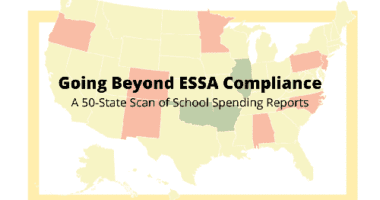A Few Reflections on PISA 2012
Much has already been said about the United States’ middling performance on the Programme for International Student Assessment (PISA). However, most of last week’s stories looked at the U.S. as a whole and have failed to focus on what the results say about disadvantaged students and students of color in the U.S. That’s a major shortcoming because we can’t improve as a nation unless we close the gaps that exist within the U.S. and make sure that all of our students achieve at high levels.
When we look closely at the data, we see that our students of color and disadvantaged students perform especially poorly, even compared with our mediocre national performance:
- Disadvantaged students in the U.S. are more likely than their international peers to be at the bottom of the performance distribution — and less likely to be near the top. The U.S. ranks 11th out of 34 developed countries in students who are both disadvantaged and low-performing, but only 26th in its ability to help students from low socioeconomic backgrounds become top performers in math.
- While about 1 in 8 white U.S. teens demonstrate higher order math skills — like using existing knowledge to address new problems and reflecting on actions — only 1 in 25 Latino teens and 1 in 100 African American teens demonstrate these skills.
- For students from the lowest socioeconomic backgrounds, the U.S. ranks 25th of 34 countries (the same is true for students from the highest socioeconomic backgrounds). That’s despite the fact that American teens are better off economically than their peers in many other countries.
All of this, and much more, is included in the Ed Trust’s analysis of the PISA results. Take a look at our slides to learn more.
Of course, understanding our own performance is just the beginning. If we want to remain competitive with other nations, we also have to learn from places that are narrowing gaps between their students — including schools, districts, states, and even countries that are doing so.










